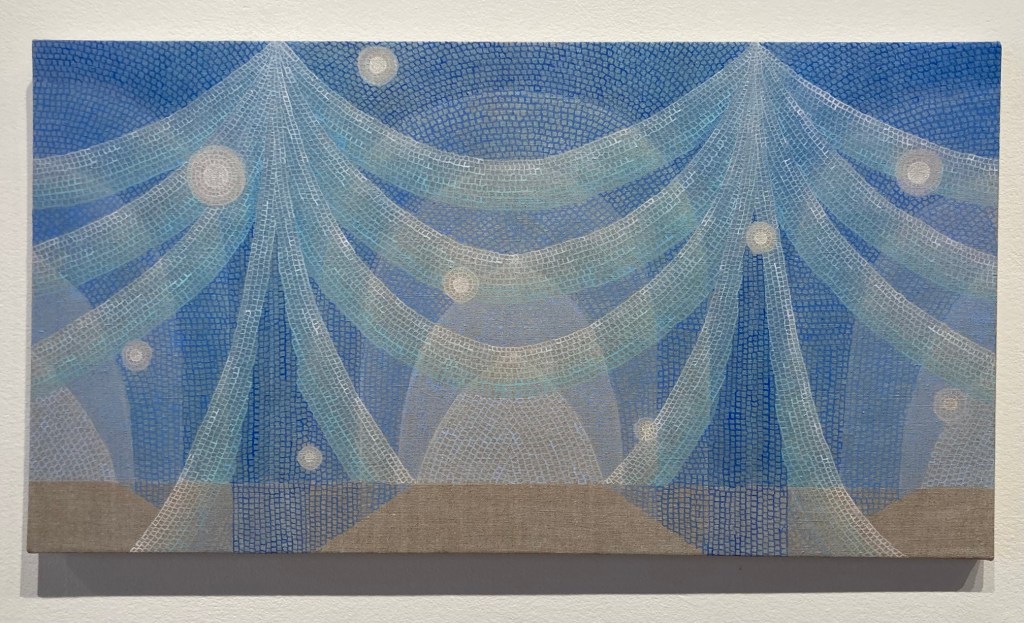The West was built on landscape paintings. Those early vistas captured by 19th-century artists — depicting towering mountains, rolling plains, lush forests and free-roaming wildlife — provided ample inspiration for the migration of masses of people who pushed existing Eastern settlements toward the Pacific Ocean.
We recognize now that those works of art contained myths about lands that — in retrospect — might have been better left as they were, but that does not change the history of U.S. expansion, or disassociate this part of the country from its connection to colorful works of art that portray the expansiveness of nature or the fundamental attraction it holds for humanity.
Coloradans love a landscape painting and always have. Western art is big business here and local museums hold wide-ranging collections that draw scores of visitors. These objects help us understand who we are, and where we came from.
That is the context for any exhibition of landscape art produced in this region — even when the artists replace traditional art-making techniques with new methods of creating work, and even when the scenes they present feature faraway terrain.
That is the case for “Desire Lines,” a group exhibition currently at David B. Smith Gallery in Denver’s LoDo neighborhood. The show features four artists, each with a very different way of recreating landscapes. It all comes together into an intriguing update on the concept of the popular genre. It is a compact exhibition, but regional art fans will surely appreciate it.
The exhibition is guest-curated by Kate Mothes, and that alone makes it different. Commercial galleries more frequently leave the organizing of shows up to in-house staff who select and arrange work with the primary goal of selling it.
The works in this show are, indeed, for sale, but the presence of an outside curator adds a rich dimension that permits gallery visitors to view them less as commodities and more as novel approaches to making nature scenes. “Desire Lines” feels like a small museum show.
The objects are imaginative and multi-layered, starting with the works from Saskia Fleishman, who upends the usual horizontal landscape format by capturing natural scenes on vertical canvases — though her “canvas” is actually chiffon fabric, upon which she prints cut-out portions of photographs she has taken of places like Wyoming and Arizona. The digital cut-outs are slightly blurry and only reveal portions of the landscape.
The artist completes the scene — a canyon, a cloudscape, a shoreline — in the usual manner, using acrylic paints to fill in realistic details of grass, rocks or tree lines. Her final gesture is to apply another layer of paint, mixed with sand or soil that she has gathered from the site she is capturing. The top layer is gritty and thick, giving her works textural depth and an earthy feel.

By integrating different surfaces and media, Fleishman is able to render something deeper than a postcard. Her scenes feel both real and imagined at the same time. The works are more about the memories we hold of places we have encountered and how those memories morph over time.
There is an overlapping idea of that evolution of memory in Jessica Cannon’s acrylic paintings of sunrises in various parts of the world. Her scenes start with recognizable imagery — the actual sun peaking over the horizon — but she expands her vista by getting more and more abstract as she reaches the edges of her canvas. Familiar scenes transform into delicate, hand-made geometric patterns.
Along the way, reality turns into a web of recollections and sensations. Notably, Cannon keeps her color palate soft, with gentle pinks and blues, and that takes the emphasis off the physical mountains and skies at the heart of her pictures and moves it into the realm of imagination.
Miguel Arzabe has his own approach to the idea of an abstract landscape. His works are weavings that reference the traditional art of Bolivia, where he traces his family’s roots.
Arzabe starts by creating an abstract painting, then cuts it into strips that he then weaves into the fabric of another canvas that has already been stretched. The result is a criss-cross patchwork of shapes and colors that resemble — somewhat — scenes of nature. Up close, they are clearly textile art, though from a distance they look like abstract accumulations of pixels that might be generated digitally.
The works are bold and likable and something of a mystery, though his work titles help us understand that they are mountains, birds and other natural objects.
The fourth artist, Michelle A M Miller, has a different, and organic, way of making art. Her pieces are less about capturing landscape and more about using natural elements derived from the earth to make abstract artworks. She makes her own paper and shapes her pieces into vertical and symmetrical objects that look like flat totems meant to be hung on the wall.
Every step of her process is natural. Her pieces are made from things like crushed oyster shells, ash from burnt wood and even ripped-up pieces from her own previous drawings. She incorporates all those items into monochromatic “drawings” that feel like 20th-century abstract paintings mixed with the loose, low-tech feel of primitive art.

“Desire Lines” is a variety show, but all of its acts take inspiration from the same place: the natural landscape — though each artist here has a distinct, and captivating, point of view.
Those perspectives do not associate in obvious ways — they are radically different — but they are pulled together seamlessly by curator Mothes, who was wise to see the connections.
For art fans who think they have already seen the planet from every angle an artist can conjure, this show will be full of otherworldly surprises.
IF YOU GO
“Desire Lines” continues through July 13 at David B. Smith Gallery, 1543 Wazee St. It is free. Info: 303-893-4234 or davidbsmithgallery.com.
